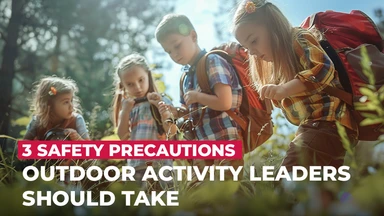Keeping Children Safe during Field Trips


Few things get schoolchildren more excited than a field trip. Whether it’s to the zoo, a museum, an aquarium, or a local sports stadium nearby, children welcome field trips as a chance to break routine and experience something new.
That one day spent on a field trip, experiencing things that are out of the ordinary, could teach them lessons that they wouldn’t have learned as well in school.
Nevertheless, adults often worry about what could go wrong during a field trip, and rightfully so. There’s a chance that one of the pupils will lose their way, get hurt, or suddenly fall ill. If such occurrences are already quite scary when they happen in school, what more if they happen in an unfamiliar environment?
That said, there’s value in having a well-organised field trip, being prepared for emergencies, and keeping children in sync with their adult guardians. Whether you are a teacher, a parent chaperone, or another adult tasked with supervising children, we at Australia Wide First Aid are happy to share these tips on keeping your charges as safe as possible during a field trip.
If you enjoyed this feature from Australia Wide First Aid, you can peruse our blog to learn about childcare and safety tips, how your kids can become first-aiders themselves, and other topics related to first aid for children of all ages.
Better yet, come to one of our training centres and earn a certificate of first aid completion—an achievement that any parent, teacher, childcare worker, or guardian will be proud of. Click on any of the location pages below to explore the specialised first aid training courses available from Australia Wide First Aid!

October 1, 2024
Almost every job involves using the body to carry out some type of manual task. Some tasks may be hazardous, causing injuries such as musculoskeletal disorders (MSDs). Knowing how to manage them is a legal responsibility of all workplaces.

January 10, 2024
In Australia, workplace safety is a top priority, and First Aid plays a crucial role in ensuring the well-being of employees. Workplaces are expected to adhere to specific regulations and guidelines outlined by Safe Work Australia. How does your workplace stack up?

November 24, 2023
No matter how experienced you are as an outdoor activity leader, there are some things you should always do to keep your group safe. Nature can be unpredictable, and so it’s best to be prepared.